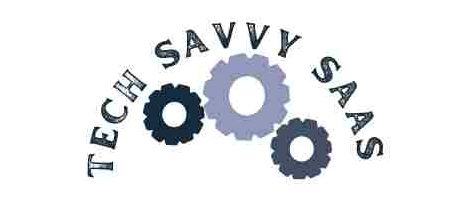In today’s digital age, the landscape of education is rapidly evolving, with traditional classroom settings being complemented and, in some cases, replaced by online platforms. At the heart of this transformation are social learning platforms. These platforms represent dynamic online spaces where learners converge to not just consume information but actively participate in the learning process.
Social learning platforms serve as hubs for collaborative learning, enabling individuals from diverse backgrounds to engage, collaborate, and share knowledge seamlessly. Unlike traditional learning management systems (LMS), which often focus solely on content delivery, social learning platforms prioritize interaction and community-building, fostering a sense of belonging and engagement among learners.
For instance, imagine a scenario where learners scattered across the globe come together in a virtual environment to discuss complex topics, work on group projects, and learn from each other’s experiences. This is the essence of social learning platforms: creating a vibrant ecosystem where knowledge is not just transmitted but actively co-created by the community.

The importance of online learning communities
In the fast-paced and interconnected world of today, online learning communities have emerged as invaluable assets for individuals across various domains, spanning from education to professional development. These communities serve as hubs of collaboration, knowledge sharing, and support, transcending the limitations of traditional classroom settings.
Online learning communities offer learners a platform to connect with peers who share similar interests, regardless of geographical boundaries. Whether one is pursuing a course, seeking mentorship, or exploring new skills, these communities provide a conducive environment for interaction and engagement.
Moreover, online learning communities offer a plethora of resources and learning materials, ranging from articles and videos to webinars and online courses. This accessibility to a wide array of educational content empowers learners to tailor their learning experience according to their interests and goals.
In the context of professional development, online learning communities play a pivotal role in fostering networking opportunities and career advancement. Through participation in industry-specific forums, discussion groups, and online events, professionals can expand their professional network, stay updated on industry trends, and seek guidance from experts in their field.
Furthermore, online learning communities promote a culture of continuous learning and growth. By facilitating peer-to-peer feedback, collaborative projects, and knowledge sharing, these communities enable individuals to stay abreast of the latest developments in their respective fields and continuously upskill themselves.
Purpose of the Blog Post
Setting Expectations for Exploration
Welcome to this insightful exploration into the realm of social learning platforms and their profound impact on the creation of online learning communities. As you embark on this journey through the digital landscape of education and collaboration, let’s outline the roadmap ahead and establish clear expectations for what you can anticipate discovering in this blog post.
What to expect
Exploring key features
Our journey begins with a deep dive into the key features that define social learning platforms. From interactive discussion forums to collaborative learning tools, we’ll unravel the mechanisms that make these platforms dynamic spaces for knowledge sharing and engagement.
Unveiling Benefits for Online Learning Communities
Next, we’ll delve into the myriad benefits that social learning platforms offer for creating robust online learning communities. Whether you’re an educator seeking to foster collaboration among students or a business leader aiming to facilitate continuous learning among your team members, you’ll discover how these platforms can elevate the learning experience for all stakeholders.
Insights for Businesses and Educators
Lastly, we’ll provide valuable insights on how businesses and educators can harness the power of social learning platforms to enhance their respective learning environments. Whether it’s optimizing course creation, implementing effective engagement strategies, or leveraging data analytics for performance monitoring, you’ll gain actionable tips to maximize the potential of these platforms in your context.
Key Features of Social Learning Platforms
Community Building Tools
Discussion Forums
Fostering interaction and collaboration
Discussion forums stand as pillars of social learning platforms, providing learners with an avenue to engage in vibrant and dynamic discussions. These virtual spaces serve as hubs for knowledge exchange, where learners can pose questions, share insights, and engage in meaningful dialogues with their peers.
Encouraging active participation
One of the primary benefits of discussion forums is their ability to foster active participation among learners. Unlike traditional classroom settings where only a few voices may dominate the conversation, discussion forums provide an equal opportunity for all participants to contribute, irrespective of their background or experience level.
Creating a Sense of Community
Moreover, discussion forums play a crucial role in fostering a sense of belonging within the online community. By facilitating interactions and building relationships among learners, these forums create an inclusive environment where individuals feel valued, heard, and connected to their peers.
Promoting critical thinking
Furthermore, discussion forums encourage learners to think critically and reflect on their own perspectives. Through engaging in debates, sharing diverse viewpoints, and challenging assumptions, participants can broaden their horizons and develop a deeper understanding of complex topics.
Example: For instance, imagine a scenario where a group of online learners gathers in a discussion forum to debate the ethical implications of artificial intelligence. Through respectful discourse and the exchange of different viewpoints, participants not only deepen their understanding of the subject but also develop essential skills such as empathy, communication, and critical thinking.
Collaborative learning features
Group Projects and Activities
Enhancing Learning Outcomes through Collaboration
Collaborative learning lies at the core of social learning platforms, and group projects and activities serve as catalysts for this collaborative process. These features enable learners to transcend individual boundaries and harness the collective intelligence of the community to achieve shared learning goals.
Fostering teamwork and communication
Group projects and activities provide learners with opportunities to develop essential teamwork and communication skills. By working together towards a common objective, individuals learn to collaborate effectively, delegate tasks, and communicate ideas in a constructive manner.
Promoting peer learning
Moreover, group projects encourage peer learning, where participants learn from each other’s strengths, perspectives, and experiences. Through active engagement and knowledge sharing within the group, learners gain new insights, challenge their assumptions, and broaden their understanding of the subject matter.
Encouraging Problem-Solving and Creativity
Furthermore, group projects foster creativity and innovation as learners collaborate to solve complex problems and address real-world challenges. By leveraging the diverse skill sets and perspectives within the group, individuals can explore alternative solutions, think critically, and develop creative approaches to tackle problems.
Example: For instance, imagine a scenario where a group of learners on a social learning platform collaborates on a research project exploring sustainable energy solutions. Through collaborative brainstorming sessions, data analysis, and prototype development, the group not only gains a deeper understanding of renewable energy but also contributes to real-world solutions that have a positive impact on the environment.
Content Sharing and Access
Resource Libraries
Facilitating seamless access to learning materials
Resource libraries serve as treasure troves of knowledge within social learning platforms, offering learners easy access to a diverse range of educational materials. These libraries are curated collections of articles, videos, e-books, and other resources carefully selected to enrich the learning experience and cater to the diverse needs and interests of learners.
Curating relevant content
One of the key functions of resource libraries is to curate relevant content that aligns with the learning objectives and interests of the community. Whether it’s exploring new topics, delving deeper into subject matter expertise, or accessing supplementary materials for coursework, learners can rely on resource libraries to find high-quality educational content at their fingertips.
Enabling Self-Paced Learning
Resource libraries empower learners to take control of their learning journey and engage in self-paced learning. By providing on-demand access to learning materials, individuals can explore topics of interest, review course materials, and access additional resources to enhance their understanding of the subject matter at their own convenience.
Supporting Different Learning Styles
Moreover, resource libraries cater to different learning styles and preferences, offering a variety of multimedia content formats to suit diverse learning needs. Whether learners prefer reading articles, watching instructional videos, or listening to podcasts, resource libraries ensure that individuals can engage with learning materials in a way that resonates with them.
Example: For instance, imagine a learner on a social learning platform who is interested in expanding their knowledge of digital marketing. By exploring the resource library, they can access a wealth of educational materials, including articles on marketing strategies, tutorial videos on social media advertising, and e-books on search engine optimization, allowing them to gain comprehensive insights into the field of digital marketing.
Benefits of Online Learning Communities
Enhanced Engagement
Increased Participation
Motivating Active Engagement
Online learning communities foster a culture of active participation among learners, breaking down the barriers of traditional classroom settings and encouraging individuals to engage with course materials in meaningful ways. By providing opportunities for interaction, collaboration, and peer-to-peer learning, these communities inspire learners to take an active role in their education journey.
Creating Opportunities for Interaction
One of the primary ways in which online communities drive increased participation is by creating avenues for interaction among learners. Through features such as discussion forums, live chat sessions, and collaborative projects, individuals can connect with their peers, share ideas, ask questions, and engage in meaningful discussions related to the course content.
Fostering Collaboration
Moreover, online communities facilitate collaboration among learners, allowing them to work together on group projects, share resources, and provide feedback to their peers. By collaborating with others, individuals gain new perspectives, learn from different viewpoints, and develop essential teamwork and communication skills that are vital for success in both academic and professional contexts.
Empowering Learners
Furthermore, online communities empower learners to take ownership of their learning experience and contribute actively to the collective knowledge pool. Whether it’s sharing insights from personal experiences, offering solutions to challenges, or providing support and encouragement to fellow learners, individuals play a vital role in shaping the dynamics of the community and creating a supportive learning environment.
Example: For instance, consider a scenario where a learner on a social learning platform actively participates in a discussion forum focused on a challenging topic in their course. By sharing their insights, asking thought-provoking questions, and engaging in constructive debates with their peers, the learner not only deepens their understanding of the subject matter but also inspires others to contribute to the conversation, leading to a rich and collaborative learning experience for all participants.
Improved Learning Experience
Personalized learning paths
Catering to Individual Learning Needs
Personalized learning paths stand as pillars of innovation within social learning platforms, revolutionizing the traditional one-size-fits-all approach to education. These tailored pathways empower learners to take control of their learning journey, catering to their unique preferences, abilities, and learning styles.
Flexibility and autonomy
One of the key benefits of personalized learning paths is the flexibility and autonomy they offer to learners. Rather than being confined to a predetermined curriculum, individuals have the freedom to set their own pace, choose their learning objectives, and explore topics that align with their interests and goals.
Adapting to learning preferences
Moreover, personalized learning paths adapt to the individual learning preferences of each learner, providing customized recommendations and resources based on their prior knowledge, skills, and preferences. Whether learners prefer visual, auditory, or kinesthetic learning styles, these pathways ensure that content is delivered in a way that resonates with them.
Targeted skill development
Furthermore, personalized learning paths enable targeted skill development by identifying areas of strength and weakness and providing tailored resources and activities to address learning gaps. Through adaptive assessments, progress tracking, and personalized feedback, learners can focus their efforts on areas where they need the most improvement, leading to more efficient and effective learning outcomes.
Example: For instance, imagine a learner on a social learning platform who is interested in mastering a new programming language. Through a personalized learning path, the platform assesses the learner’s current proficiency level, identifies their learning goals, and recommends a series of interactive tutorials, coding exercises, and real-world projects tailored to their skill level and interests. As the learner progresses through the pathway, they receive personalized feedback and guidance, allowing them to gradually build their expertise in the programming language at their own pace.
FAQs
What are social learning platforms?
Social learning platforms are dynamic online spaces where learners come together to engage, collaborate, and share knowledge in virtual learning environments. Unlike traditional learning management systems (LMS), which focus primarily on content delivery, social learning platforms prioritize interaction and community-building, fostering a sense of belonging and engagement among learners.
How do social learning platforms facilitate collaboration among learners?
Social learning platforms facilitate collaboration among learners through various features and tools designed to promote interaction and knowledge sharing. These platforms offer discussion forums, group projects, live chat sessions, and collaborative document editing tools, enabling learners to work together on assignments, share ideas, ask questions, and engage in meaningful discussions. By providing a supportive environment for collaboration, social learning platforms empower learners to learn from each other’s experiences, contribute to the collective knowledge pool, and develop essential teamwork and communication skills.
What are some examples of social learning platforms?
Some examples of social learning platforms include:
- Mighty Networks: A platform that allows users to create their own branded communities and online courses, fostering collaboration and engagement among members.
- Edmodo is a social learning platform designed specifically for educators and students, offering features such as discussion boards, quizzes, and assignment tracking.
- LinkedIn Learning is an online learning platform that combines social networking features with educational content, allowing users to connect with peers, share learning achievements, and collaborate on projects.
How Can Businesses Benefit from Implementing Social Learning Platforms?
Businesses can benefit from implementing social learning platforms in several ways:
- Enhanced Employee Engagement: Social learning platforms foster a sense of community and collaboration among employees, leading to higher levels of engagement and motivation.
- Knowledge Sharing and Collaboration: By providing a platform for employees to share knowledge, collaborate on projects, and learn from each other’s experiences, social learning platforms facilitate continuous learning and innovation within the organization.
- Improved Training and Development: Social learning platforms offer flexible and interactive training programs, allowing employees to access relevant learning materials at their own pace and tailor their learning experience to their individual needs and interests.
What Features Should Educators Look for in a Social Learning Platform?
Educators should look for the following features in a social learning platform:
- Discussion Forums: A platform that offers robust discussion forums where students can engage in meaningful discussions, ask questions, and share insights with their peers.
- Collaborative Tools: Tools that facilitate collaboration among students, such as group projects, collaborative document editing, and peer review features.
- Personalized Learning Paths: A platform that allows educators to create personalized learning paths for students, tailoring the learning experience to individual needs and preferences.
- Assessment and Feedback: Features that enable educators to assess student progress, provide feedback on assignments, and track learning outcomes effectively.
- Integration with Learning Resources: Integration with a wide range of learning resources, including articles, videos, interactive simulations, and online courses, to provide students with diverse learning opportunities.
Conclusion
We have explored the transformative potential of social learning platforms in shaping vibrant online learning communities. We began by defining social learning platforms as dynamic spaces where learners converge to engage, collaborate, and share knowledge. We then highlighted the significance of online communities in modern education and professional development, emphasizing their role in fostering collaboration, knowledge sharing, and support.
Moving on, we discussed the key features of social learning platforms, including community-building tools such as discussion forums, collaborative learning features like group projects, and content sharing and access through resource libraries. We also explored the benefits of online learning communities, including enhanced engagement, improved learning experiences through personalized learning paths, and the facilitation of collaboration among learners.
Furthermore, we addressed common FAQs about social learning platforms, providing insights into their functionalities, examples, benefits for businesses, and features educators should look for. By understanding these key aspects, readers can make informed decisions about implementing social learning platforms in their educational or professional contexts.
More Post
- How do implement 1:1 device programs in schools?
- Can We Unravel the Secrets of the Dark Web? Understanding Cybercrime Hideouts and Their Impact
- How do you protect your personal Online?
- What is IoT cybersecurity? Cybersecurity for Internet of Things (IoT) Devices
- What is social engineering in cyber security ? The role of social engineering in cybersecurity and its impact






